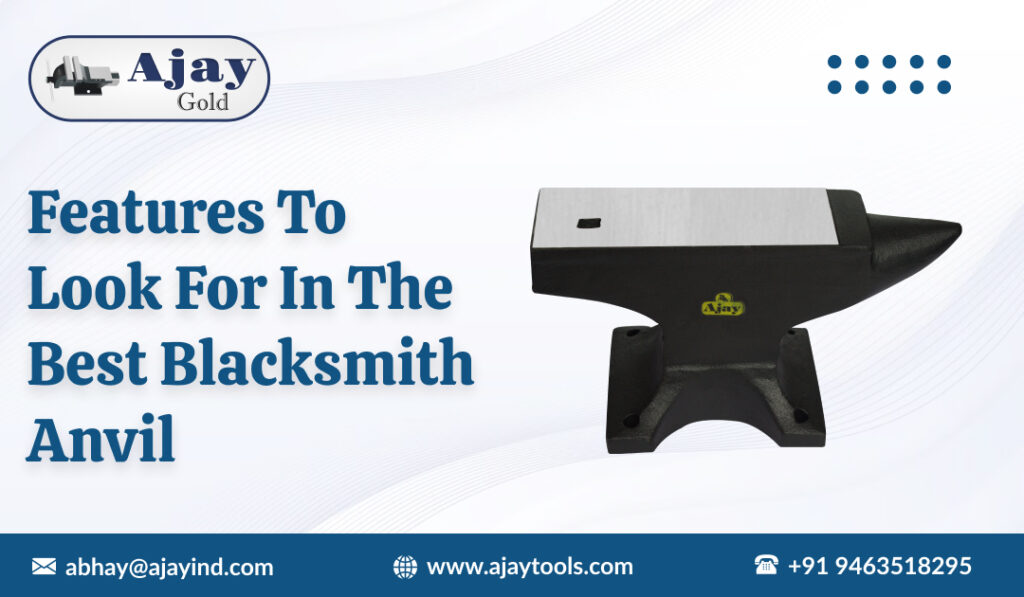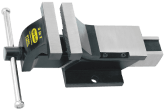You may have heard of different tools to shape, cut and flatten metal, among them, the anvil tool is the most commonly used tool. The best blacksmith anvil is appropriate for blacksmithing and other trades requiring metal manipulation. To use the anvil in the right way, you need to learn different techniques. Choosing the right anvil depends on different factors that we’ll discuss in this blog.
Understanding the uses of the anvil tool
An anvil is a solid and heavy block of steel with a plain surface and different shaped angles. It is used as a plain top for shaping, hammering, and cutting metal for several projects. Anvil is an essential tool used in metalworking. It is popular because of its uses. In the past, anvils were made of stone, but now, anvils are made using graded cast iron. Their versatility and durability have made them a crucial tool in blacksmithing and other trades. Anvils have different parts, each serving a different purpose.
- Face
The plain surface of the anvil is used for hammering. This flat top must be smooth and sturdy to withstand the hammer strikes, ensuring precise and consistent shaping of material.
- Horn
The horn is used for shaping and bending material. It is tapered and rounded to a point, making it appropriate for intricate curves and shapes that can be difficult to achieve on the plain surface of the anvil.
- Pritchel hole
A round and small hole of an anvil is used for punching holes in material. This hole is used for several tasks such as creating bolt holes in metal pieces, providing an effective way to add functionality to material.
- Hardy hole
A square hole in an anvil is known as a hardy hole. It is used to hold several tools, such as bending jigs and hardy cutters.
What are the features of the best anvil?
For accurate metalworking results, you must choose the best blacksmith anvil. Here are some factors that you should consider when choosing an anvil:
- Size: The size of the anvil should match the size and type of your project. Small-sized anvils are suitable for light-duty tasks. On the other hand, larger anvils are appropriate for heavy-duty tasks. Anvils provide stability when striking a hammer on it.
- Weight: Weight has an impact on the stability of the anvil. Heavier anvils provide more stability and can absorb more pressure allowing hammering.
- Material: Anvils are usually manufactured using cast iron, cast steel, or forged steel. Graded cast iron anvils are the most durable and offer the best performance for demanding metalworking tasks.
How to use an anvil tool?
When setting up your workspace, it’s crucial to position the anvil on a stable and solid surface, such as a sturdy anvil stand or heavy-duty workbench. Ensure it’s securely fastened to prevent any movement during use. The anvil must be placed at the right height, and the face must be level with your knuckles when your arm is hanging at your side. This height helps reduce strain and gives you better control. These conditions are also used when you use a vice. You need to take care of a work bench with vice when securing a vice.
Safety precautions when working with an anvil include:
- To protect yourself from sparks, metal fragments, and heavy tools, always wear safety glasses, gloves, and appropriate footwear
- Keep your workspace tidy and organized to minimize tripping hazards and ensure quick access to your tools.
- Make sure your workspace is clean to enhance visibility and avoid accidents.
- Regularly inspect your anvil, hammer, and other tools for wear or damage.
- Repair or replace any tools that are damaged to maintain a safe environment.
When you’re ready to begin, grip the hammer firmly and strike the metal with smooth, controlled blows on the anvil’s face. Adjust the metal as needed to shape it correctly. For bending, position the metal over the horn of the anvil and hammer it to achieve the desired bend. To cut, place the metal over a hardy cutter in the hardy hole and strike it with the hammer to cut through cleanly.
Conclusion
Now you have an idea of how to choose the right anvil tool according to your work requirements. You can explore different sizes of anvil at Ajay Tools. Additionally, you can check the price of anvil from our website.


